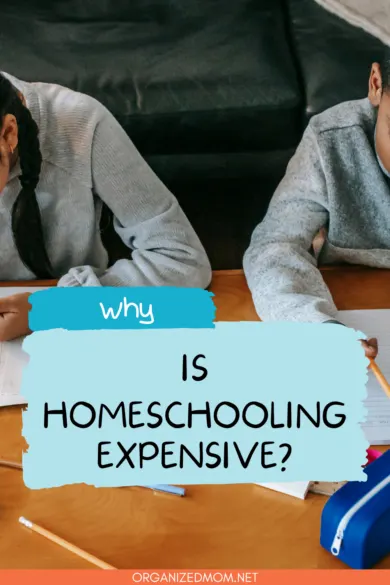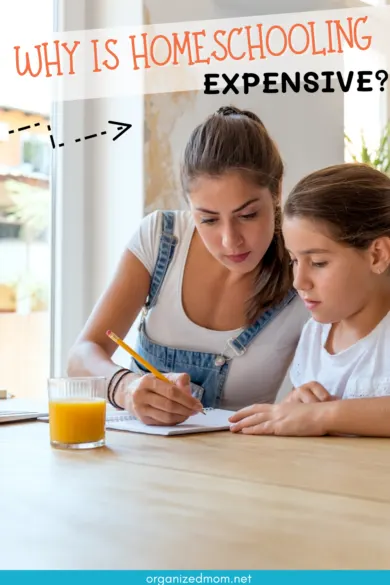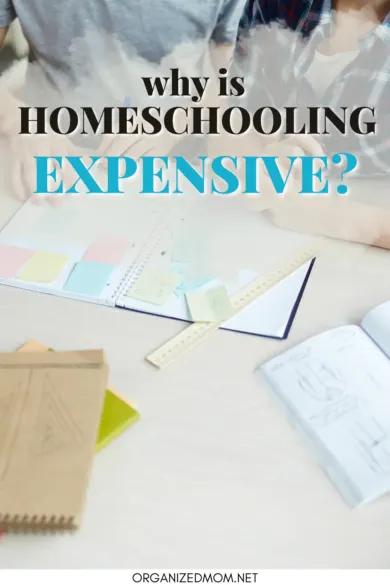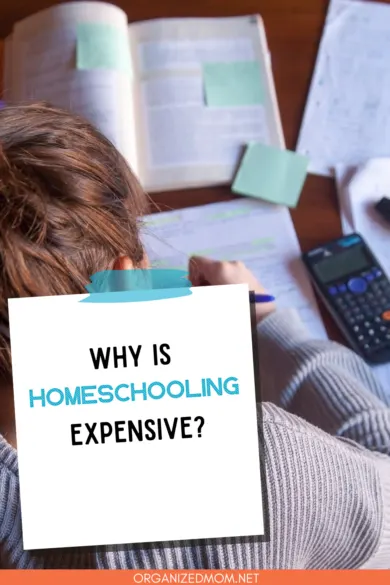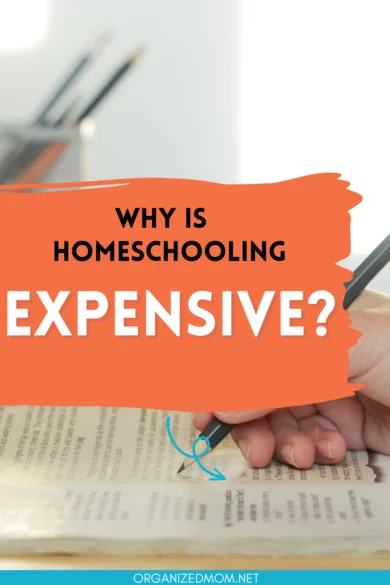Parents choose to switch their kids to homeschooling because they care deeply about the quality of their education. But taking on this responsibility can also be a surprising financial burden. I delve a bit into why homeschooling is so expensive and offer tips to keep the budget down.
Homeschooling course costs vary from free to upwards of $900 per course. Paid curricula are more likely to incorporate textbooks, workbooks, and supplies and provide independent marking and tutoring. Additional costs for activities, kits, and materials add to the expense of homeschooling.
There are several reasons why homeschooling costs add up quickly—remember, you’re not only providing all the teaching needs for your kids. You must also cover their textbooks, project materials and tools, and all the admin costs. Education is expensive, even if you homeschool!
Why Is Homeschooling Expensive?
Homeschooling costs quickly increase, especially if you have multiple children to teach. While some things can be used over time—like microscopes or reading books—many things are only single-use.
Items such as workbooks can only be used once, while textbooks may need to be updated as curricula change.
Here are some things you can expect to spend money on while homeschooling. You’ll see it’s very easy for the cost to mount!
- Curriculum
- Textbooks
- Workbooks
- Readers
- Supplementary coursebooks
- Science Kits, such as microscopes, Bunsen burners, test tubes, chemicals
- Scientific calculators
- Laptop/tablet (especially if working at the high school level where many curricula are online)
- Stationery
- Art and craft supplies
Then there are the additional costs you might not even have considered:
- Classroom space and furniture
- Electricity
- Paperwork/admin
- Printing
- Excursions
- Extracurricular tutors/activities
And, the big one— someone needs to be there to homeschool. This might be a parent, which means a potential loss of income. Or you may need to create a homeschool co-op and cover the costs of tutors.
No wonder you need to be dedicated to homeschooling to make it work!
What Does a Homeschool Curriculum Cost?
Costs for homeschooling curriculum will vary, but you want to be assured your child is receiving a quality education. There’s no point in cutting corners on the curricula, as it serves as the base for your child’s education.
Some parents may choose to do without a curriculum. Still, I think that’s a choice that should only be made by parents who are trained educators and understand precisely what is needed for each subject at each level. Most of us benefit from the guidance of a standardized curriculum.
Later grades will likely become more expensive as the curriculum broadens and more subjects must be covered in greater depth.
Below are some examples of homeschooling curriculum and their costs:
ABCMouse (Early learning, ages 2-8)
ABCMouse offers a fully online curriculum for young learners, with a subscription model of $12.99 a month or an annual plan of $59.99 a year. They also offer an option to pay $29.99 every six months.
K12.com (Pre-K to High School)
Each course is paid for separately, and you can choose between independent study and teacher-led systems. For instance, an independent study course in language arts will cost $260 for the year, while a private teacher-led course could cost $900.
Time 4 Learning (Pre-K – High School)
Time4Learning offers a subscription model. Pre-K to 8th Grade costs $24.95 a month for the first student and $14.95 for each additional student. High school subscription costs are a flat $34.95 per student monthly.
CK-12.org (K – High School, Adult Education)
CK-12 strongly emphasizes STEM subjects and provides free courses, though they accept donations. It is online and interactive, but you will likely need to buy additional support material.
Khan Academy (Pre-K – College Prep)
An excellent and trusted free curricular provider from early levels to SAT test prep and college-level courses. As with most free programs, they are online based, and you will have to buy any additional study guides or workbooks.
Edx.org (Degree level)
While not strictly homeschooling, places like EdX provide high school students with additional courses they can take to prepare them for University level education. Classes are free to audit, with additional costs for verified tracks.
Is Homeschooling Cheaper than Public School
Homeschooling may or may not be cheaper than public school, but that will depend on the courses you choose and through which providers. While some studies could easily cost you $1000 a year, there are also free providers of quality curricula.
You may find that your fees are higher when buying textbooks, computers, supplies, study guides, and workbooks. Other expenses may be decreased as children won’t need designer gear to match their peers.
However, the expenses will quickly rise when you add in the costs of specialized tutoring for courses such as music or art or high school-level math and science. Additional fees such as outings, excursions, and extramural activities add to the load.
In general, homeschooling is considered a more expensive option than public schooling.
Other considerations that add to the financial burden include the loss of income when one parent needs to stay home to teach and supervise the learning environment.
Is Homeschooling a Tax Write-Off
There are no federal government tax credits specific to homeschoolers in the USA. Homeschoolers may not opt-out of paying local/state taxes. However, some states do offer homeschooling families a few tax breaks.
The following states offer tax deductions or education expense credits that can be of use to homeschooling families:
Ways to Save Money with Homeschooling
You can implement a few things to help keep your homeschooling costs down.
- Buy school supplies in bulk or during specials, or during tax holidays
- Look for free or low-cost (but not low-standard!) school curricula
- Form a homeschooling co-op with nearby families
- Look for second-hand equipment such as microscopes, printers, laptops
- Join your local library and take advantage of its loan system and free resources
- Get season passes for local museums, or see if your library loans museum passes
- Use free resources such as YouTube, educational websites, and Massive Open Online Courses for additional material
- Reuse materials such as textbooks or course materials for other children.
Conclusion
Homeschooling is not a cheap enterprise, and depending on your needs, it can cost far more than public schooling. There are ways to keep the costs down by using free materials and online courses. However, you will still need to spend money on stationery, supplies, kits, and extramural tutoring.
Some homeschool providers will include what is needed for each course, such as textbooks, workbooks, and science equipment, as part of their costs. These courses will generally be high-priced, and you will still need to buy some extra materials and pay for excursions and field trips.
